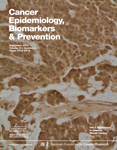Celiac.com 03/18/2010 - An international research team recently conducted an assessment of the nutritional status of children with newly diagnosed celiac disease, and compared the results to a group of matched control subjects.
The team included B. Aurangzeb, S.T. Leach, D. A. Lemberg, and A. S. Day. They are associated variously with the Children's Hospital, Pakistan Institute of Medical Sciences in Islamabad, Pakistan, the Department of Paediatrics at the University of Otago in Christchurch, New Zealand, the School of Women's and Children's Health at the University of New South Wales, and the Department of Gastroenterology at Sydney Children's Hospital in Randwick, both in Sydney, Australia.
Celiac.com Sponsor (A12):
In addition to gaining a better understanding of nutritional status in children with newly diagnosed celiac disease, the team sought to clarify the relationship between and nutrition and patterns of presentation in children with celiac disease.
The team assessed nutritional status for newly diagnosed celiac disease patients using
anthropometry, Bioelectrical Impedance and serum leptin levels, which they compared against age and gender matched control subjects.
For the study, the team enrolled twenty-five children with clinically proven celiac disease, averaging 8.2 years old (± 4.5 years), along with 25 healthy control subjects averaging 8.1 years old (± 4.4 years). A total of thirteen children with celiac disease experienced gastrointestinal symptoms, and fourteen had a family history of celiac disease. At presentation 8.7% showed physical wasting, 4.2% showed stunted growth, and 20.8% were overweight, though none were obese. There was no difference between the groups with regard to average height and weight for age, other nutritional parameters and serum leptin; which correlated with BMI in both groups.
From these results, the team concluded that children with celiac disease more commonly present with atypical symptoms than with classical features. Children with celiac disease may present with nutritional deficiencies and/or excesses weight at diagnosis, completely independent of obvious symptoms. Celiac disease did not change leptin levels.
The findings reiterate the importance of conducting nutritional assessments in the diagnosis and treatment of children with celiac disease.
Source:
- Acta Pædiatrica; 19 Feb 2010






Recommended Comments
There are no comments to display.